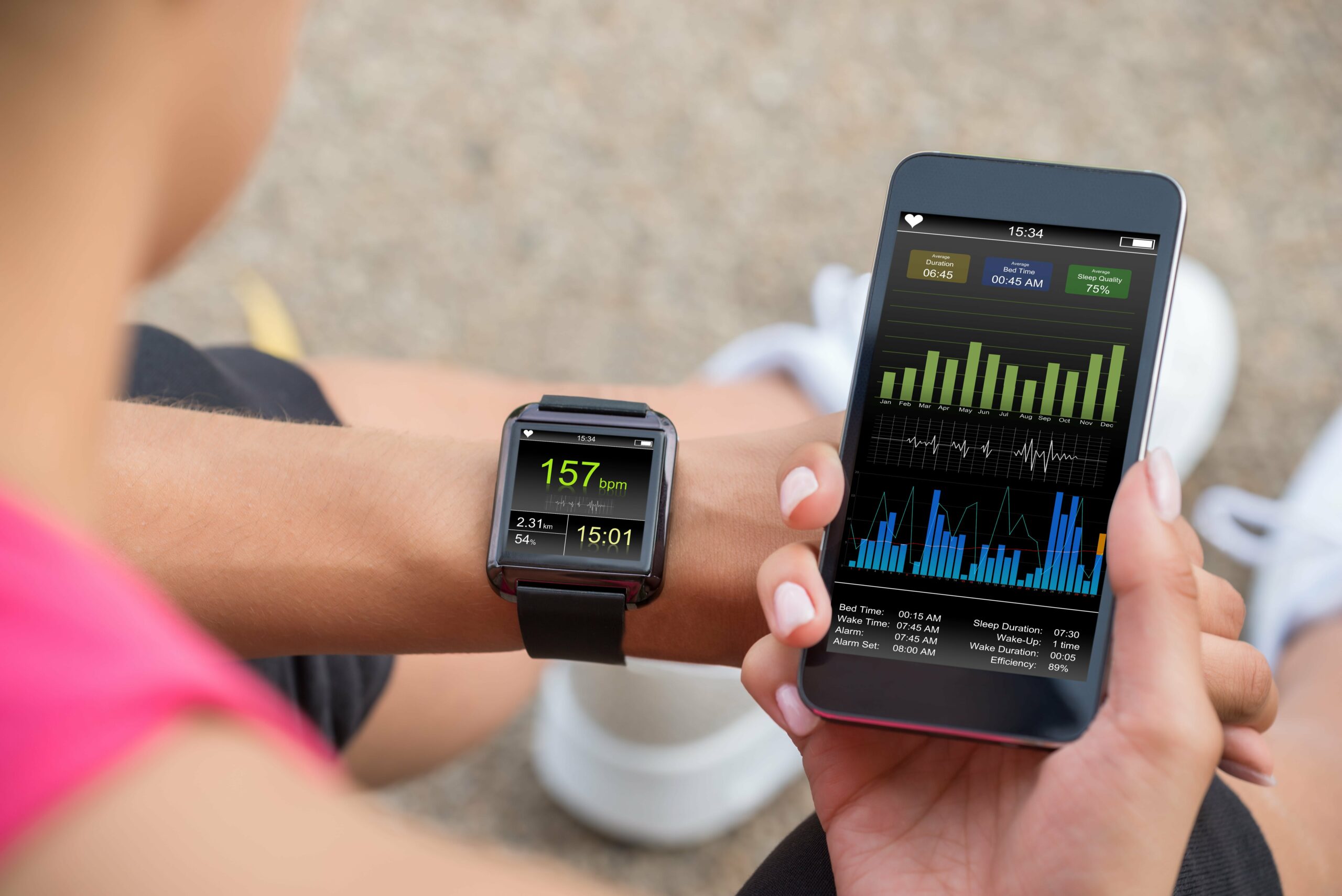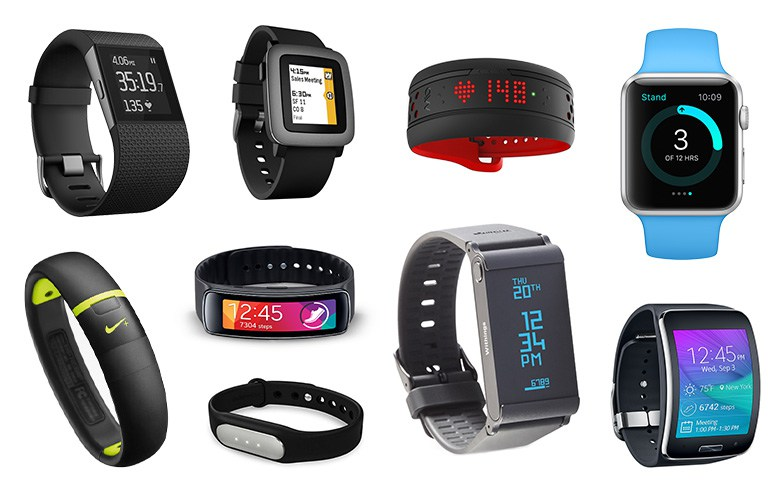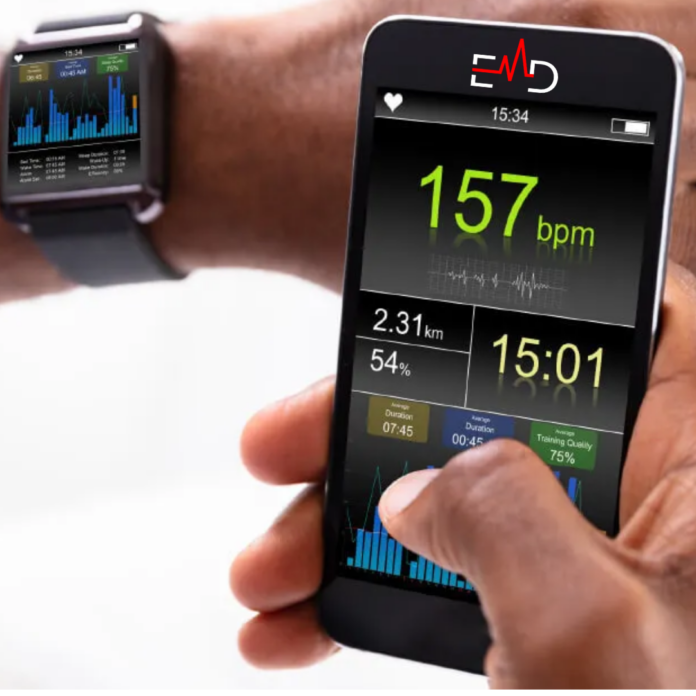Exercise daily – In today’s fast-paced world, staying fit has become both a challenge and a necessity. With technology at our fingertips, embarking on a fitness journey is easier than ever. Technology is revolutionizing how we approach fitness, from tracking your workouts to receiving personalized training plans. In this article, we’ll explore how you can leverage technology to enhance your fitness routine, making it more engaging, effective, and enjoyable.
Fitness is not just about looking good; it’s about feeling great and living healthier. Regular exercise can boost your energy, improve mental clarity, and reduce the risk of chronic diseases.
Role of Technology
Technology has infiltrated every aspect of our lives, and fitness is no exception. It offers tools and solutions to make fitness accessible to everyone, regardless of their experience level or fitness goals.
Fitness Tracking Apps
Fitness tracking apps have ushered in a revolution in how individuals monitor their physical activity and overall health. These digital companions offer information, motivation, and tracking capabilities, all conveniently accessible on your smartphone.
Benefits of Fitness Apps
Fitness apps offer many advantages for individuals looking to improve their health and fitness levels. Here are some key benefits:
1. Real-time Progress Monitoring
With fitness apps, you can track your progress in real time. They record the number of steps taken, distance covered, calories burned, and heart rate during workouts. This data helps you assess your performance and adjust your fitness routine.
2. Goal Setting and Achievement
Setting fitness goals is crucial for motivation. These apps allow you to set specific goals, whether running a certain distance, losing a certain amount of weight, or completing a certain number of weekly workouts. They then track your progress toward these goals, providing a sense of accomplishment as you achieve them.
3. Variety of Activities
Whether you prefer running, cycling, swimming, or yoga, fitness apps cater to various activities. They offer specialized tracking features and workout routines tailored to your chosen exercise.
4. Customized Workouts
Many fitness apps provide personalized workout plans based on your fitness level and goals. These plans adapt as you progress, ensuring your workouts remain challenging and effective.
5. Motivation and Accountability
Hence, Fitness apps often incorporate social features that allow you to connect with friends or a community of like-minded individuals. This social aspect can provide motivation and hold you accountable for your fitness commitments.

Wearable Devices
Wearable devices have made a significant impact in the realm of fitness and health monitoring. These intelligent gadgets, frequently worn as wristbands, watches, or other accessories, provide a convenient means to monitor and track various aspects of your well-being.
How Wearables Work
Wearable fitness trackers have sensors and technology to monitor and collect data about physical activity and health. Here’s how they typically work:
1. Sensors
Wearable devices are equipped with an array of sensors, which may include:
- Accelerometer: Measures movement, including steps taken, distance traveled, and intensity of physical activity.
- Heart Rate Monitor: Uses optical sensors to continuously measure your heart rate, providing data on your resting heart rate and heart rate during workouts.
- GPS: Some wearables have built-in GPS to track your outdoor activities more accurately, including distance and route.
- Sleep Tracker: Monitors your sleep patterns, including duration and sleep stages (light, deep, REM).
- Skin Temperature Sensor: Measures your skin temperature, which can provide insights into your overall well-being.
Data Collection
These sensors continuously collect data throughout the day and night. This data is then processed and analyzed by the device’s onboard computer or synced with a companion app on your smartphone.
Companion Apps
Furthermore, most wearable devices are accompanied by companion apps that enable users to view and interpret the data the device collects. These apps offer user-friendly interfaces, granting access to comprehensive details concerning your physical activity, sleep quality, and heart rate trends.
Notifications and Feedback
Wearables often offer notifications for calls, messages, and app alerts. They may also provide real-time feedback during workouts, helping you stay motivated and reach your fitness goals.
Choosing the Right Fitness Tracker
Selecting the right fitness tracker can significantly enhance your fitness journey. Here are some factors to consider when choosing a wearable device:
1. Fitness Goals
Consider your fitness objectives. Are you primarily interested in tracking steps and daily activity, monitoring your heart rate during workouts, or monitoring your sleep patterns? Different wearables excel in specific areas.
2. Compatibility
Ensure your wearable device is compatible with your smartphone’s operating system (iOS or Android). This ensures seamless data synchronization between your device and the companion app.
3. Design and Comfort
Wearables come in various designs, from sleek smartwatches to discreet fitness bands. Choose a design you’ll feel comfortable wearing daily, as comfort plays a significant role in consistent usage.
4. Battery Life
Consider how frequently you’re willing to charge your device. Some wearables offer extended battery life, while others require more frequent charging.
5. Water Resistance
If you’re into swimming or other water-related activities, ensure the wearable is water-resistant or waterproof to avoid damage.

Virtual Personal Trainers
Virtual personal trainers have emerged as a game-changer in the fitness industry, offering personalized guidance, motivation, and workout plans from the comfort of your own space.
Advantages of Virtual Trainers
Virtual personal trainers offer a multitude of benefits that can significantly enhance your fitness journey:
1. Convenience and Flexibility
One of the most significant advantages of virtual trainers is convenience. You can access their expertise and guidance anytime, anywhere. Virtual trainers accommodate your schedule, whether you prefer working out at home, in the gym, or during a lunch break.
2. Personalization
Virtual trainers create workout plans tailored to your fitness goals, skill level, and equipment availability. This level of personalization ensures that your fitness routine is effective and enjoyable.
3. Expert Guidance
Moreover, numerous virtual trainers are certified fitness professionals with extensive knowledge in exercise physiology and nutrition. This expertise allows them to offer expert guidance, ensuring you execute exercises correctly and safely.
4. Accountability and Motivation
Virtual trainers are crucial in helping you stay accountable for your workouts. Regular check-ins, progress tracking, and motivational messages keep you motivated and on track towards your fitness goals.
5. Cost-Effective
Compared to in-person personal training sessions, virtual trainers are often more cost-effective. You can benefit from expert guidance without breaking the bank.
Top Virtual Trainer Platforms
Several platforms offer access to virtual personal trainers. Here are some of the top options:
1. Aaptiv
Aaptiv offers audio-based workouts guided by certified trainers. Their extensive library covers workouts suitable for various fitness levels and goals, from running and strength training to yoga and meditation.
2. Beachbody on Demand
Beachbody on Demand offers renowned workout programs like P90X and Insanity. Subscribers gain access to video workouts led by top-tier trainers.
3. Nike Training Club
Nike Training Club provides a range of workout plans led by Nike Master Trainers. The app customizes workouts to your fitness level and goals, making it suitable for both beginners and experienced athletes.

Online Workouts
The popularity of online workouts has surged, presenting a convenient means to maintain an active lifestyle. These online platforms offer various exercise routines and classes that can be accessed right from the comfort of your own home.
Convenience of Online Workouts
Online workouts have several advantages that make them an appealing choice for individuals seeking to maintain or improve their fitness levels:
1. Accessibility
Online workouts are accessible 24/7, allowing you to exercise at any time that suits your schedule. Whether an early bird or a night owl, you can find a workout that fits your preferred time.
2. Location Independence
You can exercise from anywhere with an internet connection. Online workouts adapt to your surroundings, whether at home, traveling, or even in a small living space.
3. Variety of Choices
Online platforms provide many workout options, ranging from yoga and Pilates to high-intensity interval training (HIIT) and dance classes. Consequently, you can explore various styles and discover the one that suits you best.
4. Cost Savings
Many online workout platforms are cost-effective compared to traditional gym memberships or in-person classes. Some platforms even offer free content.
5. Flexibility
Online workouts cater to various fitness levels, allowing you to choose routines that match your experience and fitness goals. You can also easily switch between different workouts to keep things interesting.
6. No Commute
You can skip commuting to the gym or studio, saving time and transportation costs. This is especially advantageous for those with busy schedules.
Best Platforms for Online Workouts
Numerous platforms offer a wide variety of online workout classes and routines. Here are some of the best options:
1. Peloton
Peloton offers a range of fitness classes, including cycling, running, strength training, and yoga. Their on-demand classes allow you to choose when and where to work out.
2. Daily Burn
Daily Burn provides diverse workout videos, from cardio and strength training to dance and yoga. They also offer live classes for added motivation.
3. YouTube
Additionally, YouTube serves as a treasure trove of free workout content. On this platform, fitness enthusiasts and trainers upload thousands of workout videos, making it straightforward to discover routines that align with your preferences.
4. Beachbody on Demand
Beachbody on Demand offers many popular workout programs such as P90X, Insanity, and 21 Day Fix. These programs come with structured plans and comprehensive guidance, assisting you in reaching your fitness objectives.
5. Yoga with Adriene
The YouTube channel ‘Yoga with Adriene’ has garnered considerable fame due to its yoga classes led by Adriene Mishler. Her approachable and beginner-friendly sessions are tailored to a broad and diverse audience.
6. FitOn
FitOn provides diverse workout videos, spanning from high-intensity interval training to stretching and meditation. Additionally, the app incorporates social features, enabling users to engage in workout challenges with their friends.
7. The Body Coach TV
Joe Wicks, known as “The Body Coach,” offers free HIIT workouts on his YouTube channel. His energetic coaching style has garnered a massive following.

Smart Equipment
The world of smart fitness equipment has witnessed a remarkable transformation in how individuals approach their exercise routines. This evolution has brought forth innovative features, interactive experiences, and advanced workout tracking capabilities, significantly enhancing the exercise experience.
Innovative Fitness Equipment
Smart fitness equipment refers to exercise gear that incorporates technology and connectivity to improve your workouts and overall fitness experience. Here’s how these innovative devices typically work:
1. Data Tracking
Smart equipment has sensors and technology to monitor various workout metrics, such as heart rate, calories burned, and exercise duration. This data is then displayed on a built-in screen or synced to a companion app.
2. Interactive Workouts
Numerous smart fitness devices provide interactive workouts guided by trainers or on-screen instructors. Furthermore, these workouts can vary in intensity and duration, catering to diverse fitness levels and goals.
3. Connectivity
Smart equipment frequently connects to your smartphone or tablet via Bluetooth or Wi-Fi. As a result, you can conveniently stream workouts, monitor your progress, and access additional features through dedicated apps.
4. Personalization
Additionally, certain smart fitness gear offers personalized recommendations and adjustments tailored to your performance and goals. This ensures that your workouts consistently stay both challenging and effective.
5. Gamification
Gamification elements, such as leaderboards, challenges, and rewards, are commonly incorporated to make workouts more engaging and motivating.
Examples of Smart Exercise Gear
Here are some notable examples of smart fitness equipment:
1. Peloton Bike
The Peloton Bike stands as a prime example of smart fitness equipment. Featuring a large touchscreen, it seamlessly streams live and on-demand cycling classes. Simultaneously, it diligently tracks your workout metrics and fosters a vibrant community of riders for added motivation and support.
2. Mirror
The Mirror represents another innovative piece of smart fitness equipment. It functions as a full-length mirror and displays instructor-led workouts, covering various exercises, including strength training, yoga, and cardio workouts.
3. Tonal
Tonal, a smart home gym, utilizes electromagnetism to create resistance for strength workouts. Additionally, it offers guided exercise routines and provides instant feedback.
4. Hydrow Rower
The Hydrow rower, a smart rowing machine, emulates the sensation of rowing on water. Moreover, it provides live and on-demand rowing classes featuring scenic visuals.
5. Bowflex SelectTech Dumbbells
Bowflex SelectTech dumbbells, which are adjustable, seamlessly synchronize with a mobile app to monitor your repetitions, sets, and overall progress. In addition, they serve as a versatile replacement for numerous sets of conventional dumbbells.

Nutrition Apps
1. Tracking Your Diet with Apps
Nutrition apps help you monitor your calorie intake, macronutrients, and meal planning. They complement your fitness goals.
2. Recommended Nutrition Apps
Explore apps like MyPlate, Cronometer, and Lose It! for effective nutrition tracking.
Health Monitoring
1. Monitoring Vital Signs with Technology
Some wearables go beyond fitness tracking to monitor vital signs like blood pressure, ECG, and oxygen levels. They can be crucial for health management.
2. Health-Oriented Wearables
Learn about devices like Apple Watch and Withings that offer health monitoring features.
Personalized Workout Plans
1. Tailored Workouts with Tech
Technology can analyze your fitness data and create personalized workout plans that suit your goals and preferences.
2. Apps Offering Personalized Plans
Explore apps like Fitbod, JEFIT, and Freeletics that generate customized workouts.
Mindfulness and Meditation Apps
1. Incorporating Mental Fitness
Mental fitness is as important as physical fitness. Explore how mindfulness and meditation apps can reduce stress and improve overall well-being.
2. Mindfulness App Recommendations
Discover apps like Calm, Headspace, and Insight Timer for guided meditation.
Conclusion
Technology has brought about a new age of fitness, making it easy and fun for everyone. Whether you like counting your steps with a device or exercising at home with online classes, there’s a tech answer. Using these tech tools in your fitness journey helps you stay motivated, reach your goals, and live a healthier life.
FAQs – How to Use Technology to Enhance Your Fitness
Q: Are fitness tracking apps accurate?
Fitness tracking apps can provide accurate data when used properly and with the right devices. However, there can be variations in accuracy between different apps and devices.
Q: Can online workouts replace traditional gym sessions?
Online workouts can be effective and convenient but may not completely replace traditional gym sessions. The choice depends on your fitness goals and preferences.
Q: Are wearable fitness trackers safe for health monitoring?
Most wearable fitness trackers are safe for health monitoring, but it’s essential to use them as directed and consult a healthcare professional for specific health concerns.
Q: Do gamified fitness apps really make exercise more enjoyable?
Gamified fitness apps can make exercise more enjoyable for many people by adding an element of fun and competition to workouts.
Q: How can I protect my fitness data from privacy breaches?
Protect your fitness data by using secure apps, strong passwords, and enabling two-factor authentication. Be cautious about sharing personal information online.





